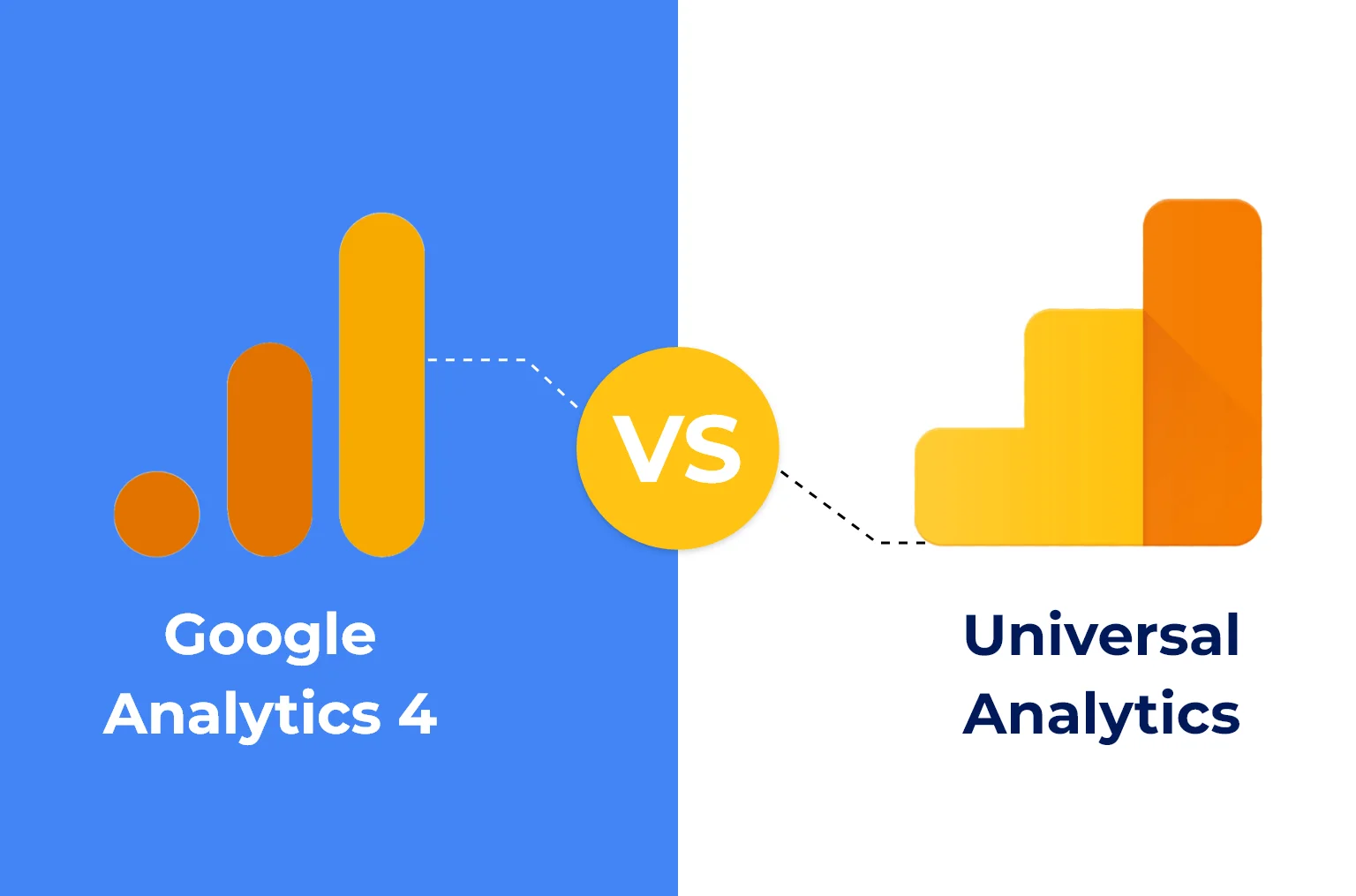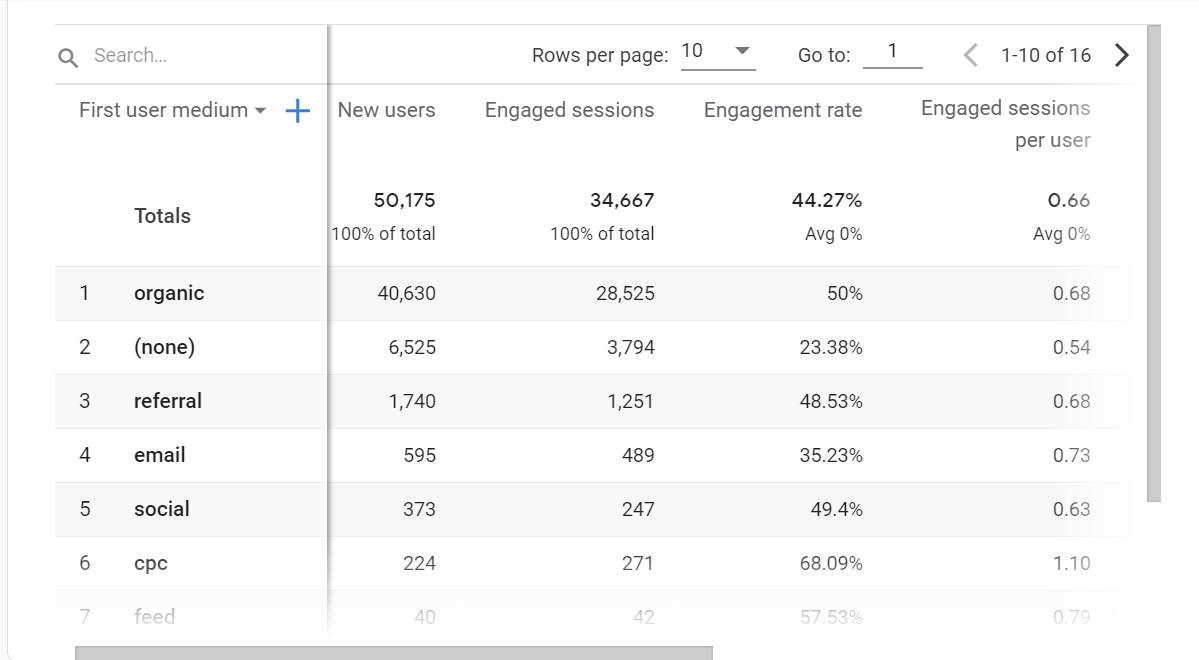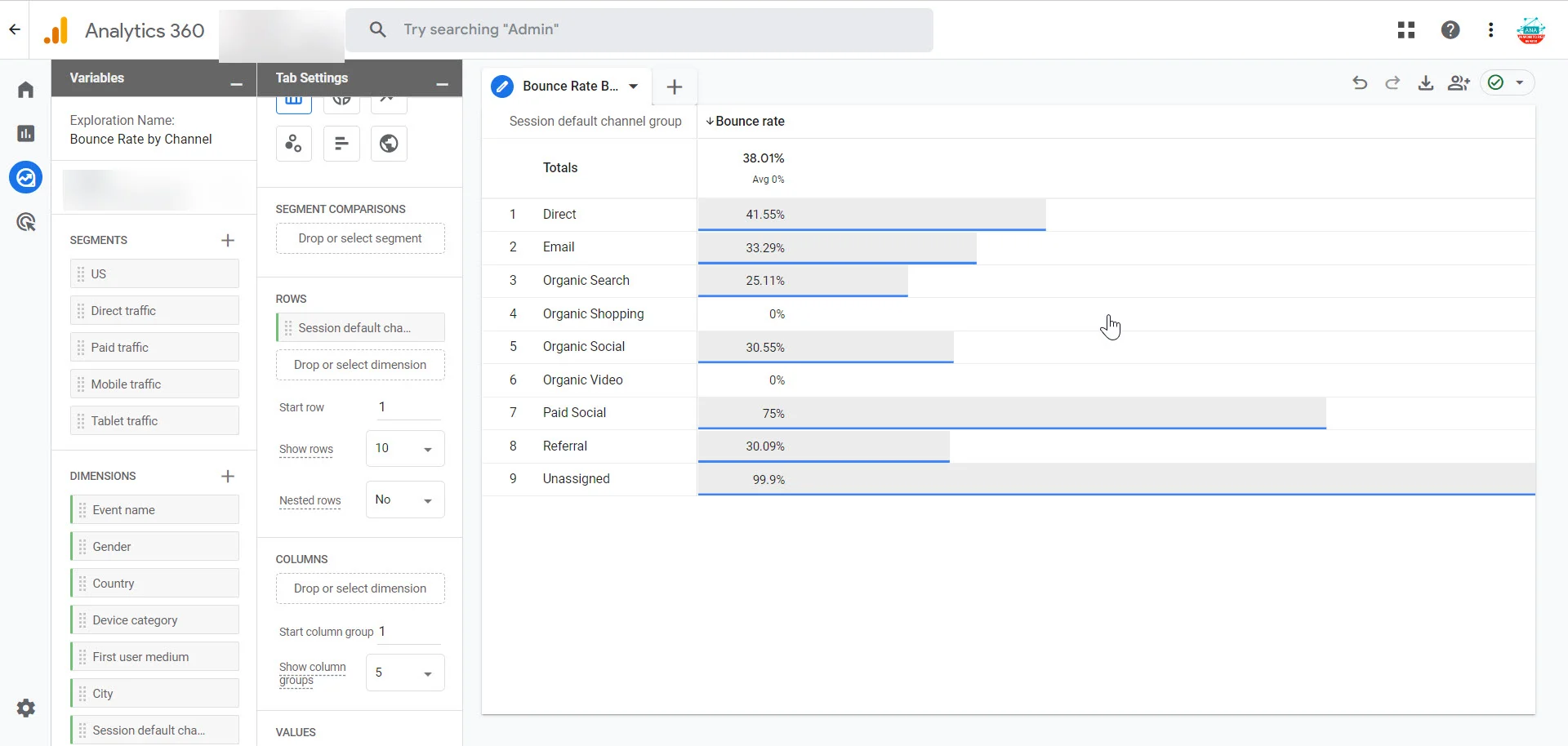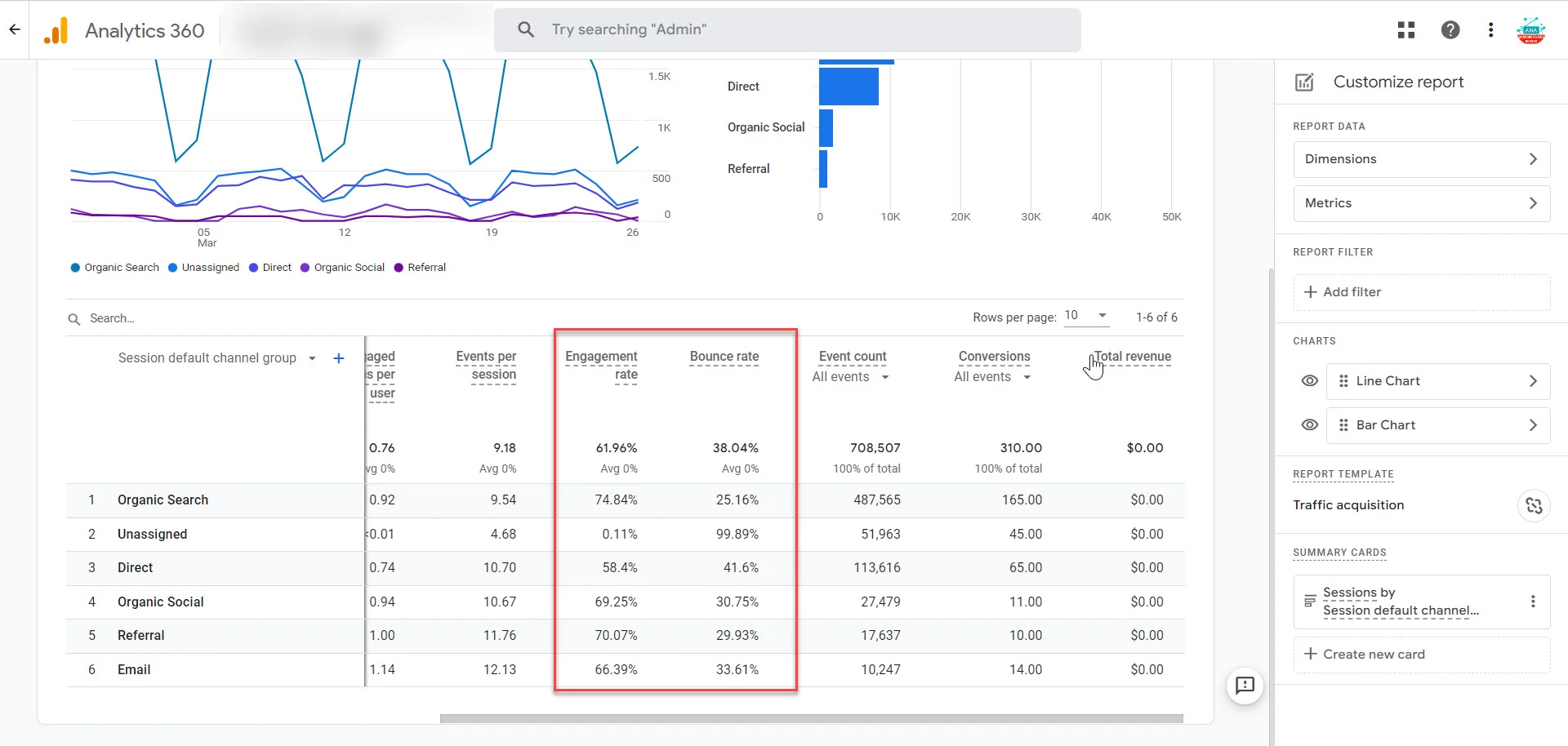
The Shift from Bounce Rate to Engagement Rate in Google Analytics 4: A Comprehensive Analysis
Introduction
In the ever-evolving landscape of digital analytics, businesses strive to gather valuable insights about their online presence to make data-driven decisions.
Google Analytics has long been a trusted tool for tracking user behavior on websites. With the introduction of Google Analytics 4 (GA4), there has been a fundamental shift in how metrics are measured and interpreted.
One of the most notable changes is the transition from using the traditional Bounce Rate in Google Universal Analytics (UA) to the more comprehensive Engagement Rate in GA4.
In this article, we will delve into the reasons why Engagement Rate is considered a more accurate and insightful metric compared to Bounce Rate.
Understanding Bounce Rate in Google Universal Analytics (UA)
Before we explore the virtues of Engagement Rate, let’s first dissect the concept of Bounce Rate in Google UA.
Bounce Rate is a metric that measures the percentage of single-page sessions, where a user lands on a webpage and leaves without any further interaction. In essence, a high Bounce Rate implies that visitors are not engaging with your site beyond the initial page they visited. Traditionally, Bounce Rate has been used to gauge the effectiveness of a webpage in terms of capturing and retaining user interest.
However, Bounce Rate has its limitations:
- Limited Scope: Bounce Rate does not account for meaningful interactions beyond the initial page. It treats all single-page sessions as equal, regardless of whether the user found what they were looking for or not.
- No Time Consideration: Bounce Rate does not consider the time spent on the page. A visitor who spends several minutes on a page reading an in-depth article is still counted as a bounce if they don’t click to another page.
- Device and Screen Size: Bounce Rate doesn’t distinguish between users on different devices or screen sizes. A visitor on a mobile device may find all the necessary information on a single page, leading to a bounce, while a desktop user may explore further.
- Missing Engagement Context: It fails to capture user engagement beyond just clicking links. Interactions like video plays, form submissions, and scroll depth are not considered.
The Rise of Engagement Rate in Google Analytics 4 (GA4)
With the limitations of Bounce Rate in mind, GA4 introduces the concept of Engagement Rate as a more nuanced and insightful metric. Engagement Rate encompasses a broader range of user interactions, offering a more accurate picture of user engagement with your website.
Here are some key reasons why Engagement Rate is considered superior to Bounce Rate in GA4:
1 – Comprehensive Interaction Tracking: GA4 takes into account various user interactions, such as pageviews, events, video plays, scroll depth, and more. This means that even if a user doesn’t navigate to another page, their actions on the current page contribute to the Engagement Rate.
2 – Event Tracking: GA4 places a stronger emphasis on event tracking, allowing businesses to define custom events that align with their specific goals. For example, tracking form submissions, button clicks, or product views provides a more accurate assessment of user engagement.
3 – Time-Sensitive: Unlike Bounce Rate, GA4’s Engagement Rate considers the time spent on a page.
This is crucial for distinguishing between users who quickly abandon a page and those who engage with the content for an extended period.
4 – User-Centric Approach: GA4’s user-centric model enables businesses to track individual users across sessions and devices. This holistic view allows for a deeper understanding of user behavior and engagement patterns.
5 – Cross-Platform Insights: In an era where users switch between devices seamlessly, GA4 provides cross-platform insights, helping businesses understand how users engage with their content on different devices and channels.
6 – Improved Accuracy: By incorporating machine learning and predictive analytics, GA4 aims to provide more accurate data and insights, reducing noise in your analytics reports.

Still skeptical of using engagement rate?
Embracing the Engagement Rate in Google Analytics 4 (GA4) over lingering skepticism is not only a wise move but a necessary one in the ever-evolving world of digital analytics.
While Google initially considered phasing out Bounce Rate from the interface. It’s important to recognize that it hasn’t been completely eradicated.
In fact, Google has taken a more nuanced approach, allowing users to customize their reports and even include Bounce Rate data if desired. However, a crucial distinction to understand is that Bounce Rate is now calculated differently in GA4, serving as the inverse of the Engagement Rate. This shift emphasizes a more holistic and user-centric perspective.
Rather than viewing this change as a cause for skepticism, it should be seen as an opportunity for greater accuracy and depth in your analytics.
By focusing on the Engagement Rate, businesses gain access to a comprehensive set of metrics that not only consider single-page sessions but also encompass a wide array of user interactions, time spent on pages, and cross-platform engagement.
This richer dataset empowers organizations to make more informed decisions, optimize user experiences, and ultimately drive better outcomes.
To access Bounce Rate in GA4 reports, the process is straightforward and customizable.
It allows users to view the data they need while keeping the primary focus on Engagement Rate.
This flexibility ensures that you can communicate performance metrics effectively to stakeholders who may be accustomed to Bounce Rate from Universal Analytics.
In summary, the transition to Engagement Rate in GA4 is a positive step forward in the realm of digital analytics. Rather than harboring skepticism, businesses should embrace this change as an opportunity to gain more comprehensive insights, make data-driven decisions, and thrive in the competitive online landscape.
It’s a shift that aligns with the evolving needs of the digital age, and by understanding and utilizing these new metrics, organizations can position themselves for success in the data-driven future.


Case Study: GA4’s Impact on User Engagement
To illustrate the difference between Bounce Rate and Engagement Rate, let’s consider a hypothetical case study of an e-commerce website that recently transitioned from Google UA to GA4.
In Google UA, the website had a Bounce Rate of 60%. This might have been concerning, as it suggested that a significant portion of visitors were leaving the site after viewing only one page.
However, when the same website implemented GA4 and started tracking user interactions more comprehensively, they discovered that the Engagement Rate was 45%.
This indicates that users were actually engaging more deeply with the site than previously thought. They were watching product videos, reading reviews, and spending time exploring various product options—all factors that were not captured by the traditional Bounce Rate metric.
The website’s marketing team, armed with this new insight, made data-driven decisions to optimize the site further. They focused on improving the user experience, enhancing product descriptions, and implementing personalized recommendations. As a result, the Engagement Rate steadily increased over time, leading to improved conversion rates and revenue growth.
Conclusion
In the transition from Google Universal Analytics to Google Analytics 4, the shift from Bounce Rate to Engagement Rate represents a significant advancement in measuring and understanding user engagement with a website.
While Bounce Rate provides a basic indication of single-page sessions, Engagement Rate offers a far more comprehensive and insightful view of user interactions, time spent on pages, and cross-platform engagement.
Businesses that embrace GA4’s user-centric model and robust event tracking capabilities will gain a competitive edge in today’s data-driven landscape.
It allows them to make more informed decisions, optimize user experiences, and ultimately drive higher conversions and revenue. As we move forward in the digital age, the accuracy and depth of data provided by Engagement Rate in GA4 will undoubtedly become an invaluable asset for businesses seeking to thrive online.

